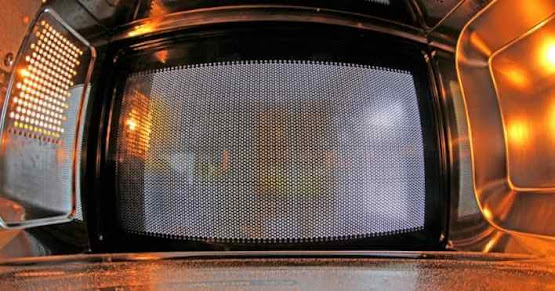Toaster oven VS Microwave: Which one is better?
A microwave and toaster oven both cook food in different ways. A microwave cooks the food by using radiation and a toaster oven uses warm air. The main advantage of a toaster oven is that it can cook more than just one thing at a time, whereas microwaves are usually limited in that sense.
The most important trade off is the type of energy they use or emit: microwaves produce EM waves, whereas toaster ovens produce infrared radiation and heat waves, which are not as harmful as EM waves.
If you want your food cooked quickly without risking parasites or cancer, go for the simple toaster oven! It's not an exaggeration when people say it's one of the best inventions ever made. It truly is. Plus, you can make really delicious treats that are very nutritious AND low calorie.
Is a microwave actually as good as you think it is?
A microwave may seem to be the "easiest" way to cook food. It has many conveniences (e.g., you can cook anything in it), so people often forget its shortcomings as well. The microwave cannot replace a true oven, and so should only be used very occasionally.
First of all, it is not that simple. Microwaves are known for their ability to heat things up quickly, but they also raise the temperature of foods too much due to water evaporation and evaporation-related water loss. That's why microwaved foods are usually dry and overcooked: the food has been heated up faster than it can evaporate moisture.
Another disadvantage is that microwaves cook foods unevenly, so it is important to cook different foods at different temperatures. Furthermore, it is not a good idea to cook rice and meat at the same time in the microwave since they both absorb water.
Why toaster oven is better than microwave?
A microwave is also unable to heat up food evenly. It will cook the outer surface first and then the core of the food, so you need to make sure that there are no dead spots in between. A toaster oven can overcome this problem because it uses some sort of metal-based heating elements which heat up quickly, but don't burn out too fast. It also heats up evenly and quickly.
A microwave oven is basically a big metal box with 2 separate chambers: a microwave part, and a main oven part where foods can be cooked. Toaster ovens, on the other hand, have a heating element and smaller space for cooking in. The heating elements are usually made of metals such as nickel, which are good at trapping heat and distributing it evenly.
The heating elements work by converting electricity into heat energy. Also, toaster ovens can be used as grills or steamers unlike microwaves which cannot be used as a grill or steamer. Microwave ovens cannot do these things because their radio waves don't work on water or metal.
Do microwaves destroy nutrients in food?
Microwaves actually do not destroy any nutrients, but they can alter the chemical structure of the food.
Do microwaves kill microorganisms?
The radiation that microwaves emit is indeed very "destructive" to bacteria, viruses, and other microorganisms - but only in the short term. Since microorganisms require water to grow, as soon as they are killed by microwaves, their cells burst and the water evaporates.
Do Toaster oven kill microorganisms?
Toaster ovens cannot kill microorganisms as easily as microwaves. Also, Toaster ovens use infrared radiation which is not very destructive to living organisms.
Why to choose a microwave?
Microwaves are more convenient to use than toaster ovens. You can prepare all sorts of foods in a microwave. It is really easy to use and ideal for all kinds of foods.
Why to choose a toaster oven?
The only advantage that microwaves have over toaster ovens is that they heat food faster. But this is a short-term advantage, since microwaved food is full of unhealthy chemicals and is also very dry. Additionally, toaster ovens are better for cooking larger portions.
Which one is the winner?
If you have to choose between a microwave and toaster oven, I would pick toaster oven over a microwave any day. A toaster oven offers many advantages over a microwave. It cooks food faster than a microwave, and it can also be used as a traditional oven, which makes it quite versatile.

Comments
Post a Comment